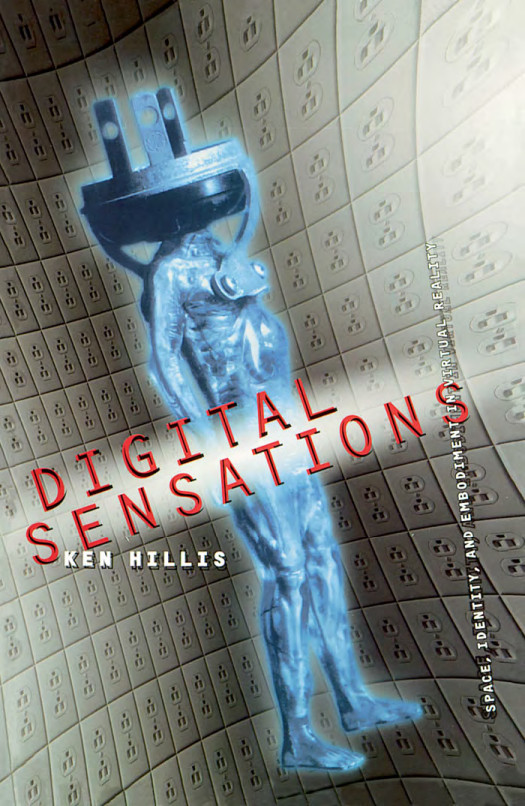Petra Kuppers: The Scar of Visibility: Medical Performances and Contemporary Art (2007)
Filed under book | Tags: · art, body, contemporary art, medicine, performance art, technology, visual culture

“Contemporary visual and performance artists have adopted modern medical technologies such as MRIs and computer imaging—and the bodily access they imply—to reveal their limitations. In doing so they emphasize the unknowability of another’s bodily experience and the effects—physical, emotional, and social—of medical procedures.
In The Scar of Visibility, Petra Kuppers examines the use of medical imagery practices in contemporary art, as well as different arts of everyday life (self-help groups, community events, Internet sites), focusing on fantasies and “knowledge projects” surrounding the human body. Among the works she investigates are the controversial Body Worlds exhibition of plastinized corpses; video projects by Shimon Attie on diabetes and Douglas Gordon on mental health and war trauma; performance pieces by Angela Ellsworth, Bob Flanagan, and Kira O’Reilly; films like David Cronenberg’s Crash and Marina de Van’s In My Skin that fetishize body wounds; representations of the AIDS virus in the National Museum of Health and on CSI: Crime Scene Investigations; and the paintings of outsider artist Martin Ramírez.
At the heart of this work is the scar—a place of production, of repetition and difference, of multiple nerve sensations, fragile skin, outer sign, and bodily depth. Through the embodied sign of the scar, Kuppers articulates connections between subjective experience, history, and personal politics. Illustrated throughout, The Scar of Invisibility broadens our understanding of the significance of medical images in visual culture.”
Publisher University of Minnesota Press, 2007
ISBN 0816646538, 9780816646531
259 pages
PDF, PDF (updated on 2018-8-12)
Comments (3)Michele White: The Body and the Screen: Theories of Internet Spectatorship (2006)
Filed under book | Tags: · body, interface, internet, photography, screen, spectatorship

Internet and computer users are often represented onscreen as active and empowered—as in AOL’s striding yellow figure and the interface hand that appears to manipulate software and hypertext links. In The Body and the Screen Michele White suggests that users can more properly be understood as spectators rendered and regulated by technologies and representations, for whom looking and the mediation of the screen are significant aspects of engagement. Drawing on apparatus and feminist psychoanalytic film theories, art history, gender studies, queer theory, critical race and postcolonial studies, and other theories of cultural production, White conceptualizes Internet and computer spectatorship and provides theoretical models that can be employed in other analyses. She offers case studies and close visual and textual analysis of the construction of spectatorship in different settings.
White shows that despite the onscreen promise of empowerment and coherence (through depictions of materiality that structure the experience), fragmentation and confusion are constant aspects of Internet spectatorship. She analyzes spectatorship in multi-user object-oriented settings (MOOs) by examining the textual process of looking and gazing, contrasts the experiences of the women’s webcam spectator and operator, describes intentional technological failures in net art, and considers ways in which traditional conceptions of artistry, authorship, and production techniques persist in Internet and computer settings (as seen in the creation of virtual environment avatars and in digital imaging art). Finally, she analyzes the physical and psychic pain described by male programmers in Internet forums as another counternarrative to the common tale of the empowered user. Spectatorship, White argues, not only affects the way specific interfaces are understood but also helps shape larger conceptions of self and society.
Published by MIT Press, 2006
ISBN 0262232499, 9780262232494
307 pages
PDF (updated on 2012-9-3)
Comment (0)Ken Hillis: Digital Sensations: Space, Identity, and Embodiment in Virtual Reality (1999)
Filed under book | Tags: · body, technology, virtual reality, virtuality

“Virtual reality is in the news and in the movies, on TV and in the air. Why is the technology — or the idea — so prevalent precisely now? What does it mean — what does it do — to us? Digital Sensations looks closely at the ways representational forms generated by communication technologies — especially digital/optical virtual technologies — affect the “lived” world.
Virtual reality, or VR, is a technological reproduction of the process of perceiving the real; yet that process is “filtered” through the social realities and embedded cultural assumptions about human bodies, perception, and space held by the technology’s creators.
Through critical histories of the technology — of vision, light, space, and embodiment — Ken Hillis traces the various and often contradictory intellectual and metaphysical impulses behind the Western transcendental wish to achieve an ever more perfect copy of the real. Because virtual technologies are new, these histories also address the often unintended and underconsidered consequences — such as alienating new forms of surveillance and commodification — flowing from their rapid dissemination. Current and proposed virtual technologies reflect a Western desire to escape the body Hillis says.
Exploring topics from VR and other, earlier visual technologies, Hillis’s penetrating perspective on the cultural power of place and space broadens our view of the interplay between social relations and technology.”
Publisher University of Minnesota Press, 1999
Electronic Mediations series, 1
ISBN 0816632502, 9780816632503
271 pages
PDF (updated on 2017-2-10)
Comments (2)
